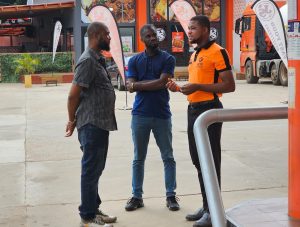By: Edzorna Francis Mensah
The Government of Ghana through The Ministry of Tourism, Arts and Culture in collaboration with the Ghana Tourism Authority is in search of private investors to develop the Keta Lagoon as a recreational, leisure, and resort enclave.
The Minister, Dr. Mohammed Awal was in Parliament on Tuesday, 15th November 2022 to respond to a number of questions including ‘the plans the Ministry has to promote tourism on the keta Lagoon, the largest in West Africa’ asked by MP for Keta, Kwame Dzudzorli Gakpey, he said, the Ministry will collaborate and partner with the traditional authorities, Community Leaders and the District Assembly to develop these activities into Agro tourism attractions which would enhance the livelihood of the people.
“The Keta Lagoon has been identified for its potential for leisure and recreational activities, development of resort, various water sports, activities like boat cruises, canoe, and kayak trips”.
On the issue of the Eco-Tourism Enclave, the Minister noted that “The Keta Lagoon enclave remains a key habitat for aquatic and wetland animals and other species” and it has also been noted for its rich coastal and marine diversity and supports internationally important species of migratory birds.
Dr. Awal said, from Fuveme to Anloga beach stretch is one of the major sea turtle breeding spots in Ghana. “The Ministry of Tourism, Arts and Culture through its implementing Agency GTA will partner with the Department of Game and Wildlife under the Ministry of Lands and Natural Resources to develop an Eco-tourism enclave within Afiadenyigba, Fiahor, Woe, Tegbi and Adina communities.
The existing receptive facilities for day and overnight bird watching are to be expanded with adequate toilet facility, tourist information centre and parking area for tourists. Already a number of private tour Operators organize bird-watching safaris for local and foreign tourists”, he added.
In relation to Agro Tourism: Crop farming is one of the most important socio-economic activities provided by the Lagoon. The area is noted for being the foremost shallot-growing area in Ghana. Tomatoes, chili pepper and garden eggs are other vegetables widely cultivated by the inhabitants within the environs of the wetlands.
Sugarcane cultivation is also undertaken on a smallholder plantation basis on the western side of the Avu Lagoon which the local community usually harvests and distills into the local alcoholic drink, akpeteshie. Fishing, salt mining, and basket weaving are also undertaken by communities such as Kedzi and Adina and those along the road from Dabble to Savietula junction.
Heritage Tourism:
Historical buildings and heritage sites such as St. Paul Lighthouse, located in Woe and Fort Prinzenstein in Keta are important tourist attractions in the area. St. Paul Lighthouse was built by the Dutch in 1802 to guide ships anchoring at the coastline. Fort Prinzenstein was constructed by the Danes in 1784 as a trading structure at the onset and later as a slave dungeon.
The Ministry through its implementing agencies, the Ghana Museum and Monument Board and the Ghana Tourism Authority are working to restore, preserve and market these important historical monuments to the Diaspora markets as part of its Beyond the Return Project.














